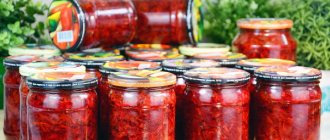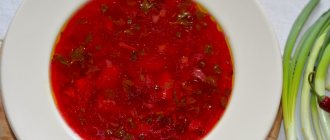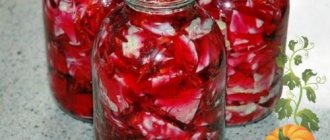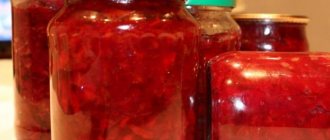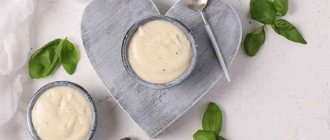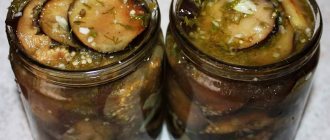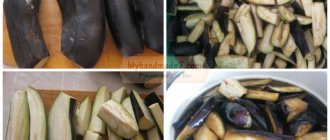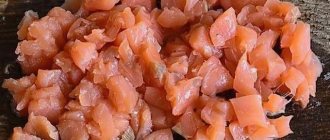Ukrainians, Poles, and Lithuanians consider this dish theirs. Borscht was the favorite dish of the Russian Tsars Alexander II, Nicholas the Great, and Catherine II. By the way, according to one version, it was the homeland of the German princess that became one of the ancestors of this dish. It is not known for certain whether the queen was brought a beetroot borscht dressing in winter, or whether the cooks prepared the dish from freshly harvested ingredients. One thing is obvious - borscht was loved at court as an affordable and vitamin-rich dish.
With winter preparation, even an inexperienced housewife can make borscht
Some facts about borscht and beetroot dressing
Descriptions of recipes for borscht dressing are often found in Gogol's works. In general, Nikolai Vasilyevich himself was noticed more than once preparing soups. Perhaps that is why the writer was able to describe the dishes most colorfully.
Classic Russian hogweed
The word “borshchak” was first used at the end of the 13th century. They called it peasant beet soup or ordinary beet soup. And the word borscht itself comes from the word “barva” (of ancient Slavic origin) and means red color. The hissing sound “sha” is a derivative of “shchi”. Interestingly, borscht in Russia was more popular in the southern regions, since beets are more frost-resistant than cabbage. But women cooked simple cabbage soup everywhere. Housewives learned to prepare beets for the winter for borscht a little later; they left them together with cabbage in the cellars.
Ingredients for borscht
It was believed that a skillful housewife could preserve the ingredients for soup until spring, when borscht was especially important for maintaining immunity and restoring strength, which was extremely important during the sowing period. After all, as you know, the more an employee eats, the better he works and the less he gets sick.
The harm and benefits of beet soup
Borscht is an ideal dish for those who suffer from liver diseases. Ideally prepared borscht will provide an optimal balance of vegetable and animal fats, fiber, enzymes and minerals entering the body. This helps the body fine-tune the processing of products, promotes the soft production of bile, which, in turn, helps the liver.
The vegetables used in preparing the soup are rich in vitamins and essential acids for the body, including folic and pantothenic acids, as well as amino acids and mineral salts.
Vegetables for borscht
Borscht contains the “magnificent seven vegetables,” which together are a powerful detoxifier for the body. Both boiled and stewed vegetables are an excellent sorbent and remove radionuclides and nitrates.
Meat broth saturates cells with protein and stimulates the production of red blood cells, which leads to increased immunity, maintaining vigor and a feeling of fullness for a long time.
Recipe for borscht dressing with beans. Calorie, chemical composition and nutritional value.
Nutritional value and chemical composition of “refueling for borscht with beans.”
The table shows the nutritional content (calories, proteins, fats, carbohydrates, vitamins and minerals) per 100 grams of edible portion.
| Nutrient | Quantity | Norm** | % of the norm in 100 g | % of the norm in 100 kcal | 100% normal |
| Calorie content | 81.4 kcal | 1684 kcal | 4.8% | 5.9% | 2069 g |
| Squirrels | 3 g | 76 g | 3.9% | 4.8% | 2533 g |
| Fats | 2.8 g | 56 g | 5% | 6.1% | 2000 g |
| Carbohydrates | 11.5 g | 219 g | 5.3% | 6.5% | 1904 |
| Organic acids | 0.1 g | ~ | |||
| Alimentary fiber | 3.1 g | 20 g | 15.5% | 19% | 645 g |
| Water | 62.6 g | 2273 g | 2.8% | 3.4% | 3631 g |
| Ash | 0.692 g | ~ | |||
| Vitamins | |||||
| Vitamin A, RE | 314.7 mcg | 900 mcg | 35% | 43% | 286 g |
| alpha carotene | 23.661 mcg | ~ | |||
| beta carotene | 1.935 mg | 5 mg | 38.7% | 47.5% | 258 g |
| Lycopene | 602.778 mcg | ~ | |||
| Lutein + Zeaxanthin | 28.815 mcg | ~ | |||
| Vitamin B1, thiamine | 0.051 mg | 1.5 mg | 3.4% | 4.2% | 2941 g |
| Vitamin B2, riboflavin | 0.043 mg | 1.8 mg | 2.4% | 2.9% | 4186 g |
| Vitamin B4, choline | 2.39 mg | 500 mg | 0.5% | 0.6% | 20921 g |
| Vitamin B5, pantothenic | 0.121 mg | 5 mg | 2.4% | 2.9% | 4132 g |
| Vitamin B6, pyridoxine | 0.112 mg | 2 mg | 5.6% | 6.9% | 1786 |
| Vitamin B9, folates | 23.442 mcg | 400 mcg | 5.9% | 7.2% | 1706 g |
| Vitamin C, ascorbic acid | 33.88 mg | 90 mg | 37.6% | 46.2% | 266 g |
| Vitamin E, alpha tocopherol, TE | 0.284 mg | 15 mg | 1.9% | 2.3% | 5282 g |
| beta tocopherol | 0.002 mg | ~ | |||
| gamma tocopherol | 0.028 mg | ~ | |||
| Vitamin H, biotin | 0.08 mcg | 50 mcg | 0.2% | 0.2% | 62500 g |
| Vitamin K, phylloquinone | 4.7 mcg | 120 mcg | 3.9% | 4.8% | 2553 g |
| Vitamin RR, NE | 0.5636 mg | 20 mg | 2.8% | 3.4% | 3549 g |
| Niacin | 0.253 mg | ~ | |||
| Betaine | 0.023 mg | ~ | |||
| Macronutrients | |||||
| Potassium, K | 194.63 mg | 2500 mg | 7.8% | 9.6% | 1284 g |
| Calcium, Ca | 17.46 mg | 1000 mg | 1.7% | 2.1% | 5727 g |
| Magnesium, Mg | 18.49 mg | 400 mg | 4.6% | 5.7% | 2163 g |
| Sodium, Na | 5.47 mg | 1300 mg | 0.4% | 0.5% | 23766 g |
| Sera, S | 1.28 mg | 1000 mg | 0.1% | 0.1% | 78125 g |
| Phosphorus, P | 48.4 mg | 800 mg | 6.1% | 7.5% | 1653 g |
| Microelements | |||||
| Aluminium, Al | 43.2 mcg | ~ | |||
| Iron, Fe | 0.883 mg | 18 mg | 4.9% | 6% | 2039 |
| Lithium, Li | 0.803 mcg | ~ | |||
| Manganese, Mn | 0.1042 mg | 2 mg | 5.2% | 6.4% | 1919 |
| Copper, Cu | 84.66 mcg | 1000 mcg | 8.5% | 10.4% | 1181 g |
| Selenium, Se | 0.293 mcg | 55 mcg | 0.5% | 0.6% | 18771 g |
| Fluorine, F | 0.84 mcg | 4000 mcg | 476190 g | ||
| Zinc, Zn | 0.2688 mg | 12 mg | 2.2% | 2.7% | 4464 g |
| Digestible carbohydrates | |||||
| Starch and dextrins | 0.042 g | ~ | |||
| Mono- and disaccharides (sugars) | 4.4 g | max 100 g | |||
| Glucose (dextrose) | 0.628 g | ~ | |||
| Sucrose | 0.469 g | ~ | |||
| Fructose | 0.455 g | ~ | |||
| Essential amino acids | 0.042 g | ~ | |||
| Arginine* | 0.147 g | ~ | |||
| Valin | 0.126 g | ~ | |||
| Histidine* | 0.067 g | ~ | |||
| Isoleucine | 0.107 g | ~ | |||
| Leucine | 0.188 g | ~ | |||
| Lysine | 0.163 g | ~ | |||
| Methionine | 0.036 g | ~ | |||
| Methionine + Cysteine | 0.003 g | ~ | |||
| Threonine | 0.104 g | ~ | |||
| Tryptophan | 0.029 g | ~ | |||
| Phenylalanine | 0.13 g | ~ | |||
| Phenylalanine+Tyrosine | 0.007 g | ~ | |||
| Nonessential amino acids | 0.08 g | ~ | |||
| Alanin | 0.105 g | ~ | |||
| Aspartic acid | 0.317 g | ~ | |||
| Glycine | 0.095 g | ~ | |||
| Glutamic acid | 0.469 g | ~ | |||
| Proline | 0.101 g | ~ | |||
| Serin | 0.131 g | ~ | |||
| Tyrosine | 0.068 g | ~ | |||
| Cysteine | 0.028 g | ~ | |||
| Sterols (sterols) | |||||
| Phytosterols | 1.64 mg | ~ | |||
| Saturated fatty acids | |||||
| 16:0 Palmitinaya | 0.01 g | ~ | |||
| 18:0 Stearic | 0.003 g | ~ | |||
| Monounsaturated fatty acids | 0.01 g | min 16.8 g | 0.1% | 0.1% | |
| 18:1 Oleic (omega-9) | 0.01 g | ~ | |||
| Polyunsaturated fatty acids | 0.041 g | from 11.2 to 20.6 g | 0.4% | 0.5% | |
| 18:2 Linolevaya | 0.027 g | ~ | |||
| 18:3 Linolenic | 0.014 g | ~ |
The energy value of the dressing for borscht with beans is 81.4 kcal.
Primary Source: Created in the application by the user. Read more.
** This table shows the average levels of vitamins and minerals for an adult. If you want to know the norms taking into account your gender, age and other factors, then use the “My Healthy Diet” application.
So what's the harm?
Some nutritionists refer to the fact that borscht (more precisely, the beets contained in the soup) is a source of oxalic acid, which, after entering the body, crystallizes and settles in the urinary tract, stimulating the development of gallstones. These conclusions are controversial, because the content of this acid in the soup is hundredths of a percent, while ordinary cocoa contains a hundred times more of it than half a pot of soup. Among the same “leaders” in terms of oxalic acid content are rhubarb and spinach.
IMPORTANT TO REMEMBER:
that for a healthy person, excess acid will not cause harm. They will simply be eliminated from the body. Regular sour cream neutralizes excess acidity, which is why soups must be seasoned with it.
And one more secret. When cooking meat, be sure to add a whole onion to the broth - it will absorb toxins. As soon as the meat is half cooked, it must be thrown away.
Classic borscht
Advantages of preparing refills
A few facts about preparing borscht dressing in the summer:
- Saving time . Spending 2-3 hours in the summer on cooking the “base” saves 20-30 minutes of time each time you cook borscht in the winter. How can one not remember the proverb about summer and sleighs? The more “jars” in your cellar, the more free time for yourself you will have during the dreary winter.
- Safety . If you often buy products in the store, for example, potatoes or cabbage, then the chances of catching a “nitrate product” are much less. According to statistics, carrots and beets are leaders in absorbing harmful substances. And if you grow them yourself, then you know for sure that the soup will be safe.
- Financial benefit . It is no secret that in winter, despite the abundance of vegetables, the prices for some of them are steep. For example, tomatoes and bell peppers are expensive to buy. And if you cook in the summer, even store-bought products will cost much less.
- Borscht dressing for the winter can not only be added to soup, but also to season salads or used as a vitamin-rich side dish for other dishes.
- The seasoning preserves many useful substances : vitamins, enzymes and minerals. And if you add more tomatoes, rich in lycopene, you can save on anti-aging masks - the housewife and all household members will be guaranteed complexion and firm skin.
- Making beans is a great way to make vegetarian soups during Easter. There is no need to waste time cooking and steaming legumes.
Main ingredients for borscht dressing
There are several hundred recipes for borscht dressing for the winter, but not one can do without the main product - beets. It is grated, cut into cubes and shavings, combined with other ingredients - everywhere beets add their own taste and unique color. The second indispensable companion to any recipe for borscht for the winter in jars is tomatoes. Typically, tomatoes are peeled by pouring boiling water over them and added as a final ingredient before sterilization or cooking.
If the housewife plans to heat the mixture, then it is better to avoid using cabbage and add it fresh during cooking. The fact is that sterilized cabbage reduces the shelf life of the product; it is usually used in those dressings that require freezing. However, we have prepared our recipe for borscht dressing for the winter with cabbage just below.
Most often, carrots, onions, bay leaves, and colored peppers are added to the preparation.
Sliced vegetables for borscht
Dressing “Family Lunch” with cabbage, sweet pepper and tomato paste
Sometimes you don't want to bother with tomatoes. It is much easier and faster to prepare canned food with tomato paste.
Ingredients:
- 2 kg of white cabbage;
- 600-700 g beets;
- 450 g bell pepper;
- 0.5 liters of tomato paste;
- 0.5 g onion;
- 450 g carrots;
- 0.5 l of clean water;
- 200 ml vegetable oil;
- 70 ml vinegar (9%);
- Sugar, salt - to taste.
How to cook:
- Chop carrots and onions and fry until golden brown.
- Add diced beets and sweet peppers, and then tomato paste, slightly diluted with water. It is very important to choose high-quality tomato paste - the taste of the product largely depends on it. The paste should be thick, homogeneous, rich red in color, but without dyes.
- Salt everything, add sugar to taste, simmer for about 15 minutes. Then add shredded cabbage, pour in a little water, simmer for half an hour. Finally, add vinegar and boil for 3 minutes.
- Pour into jars sterilized over steam and screw on the lids. Wrap it up and leave it to stand for a day.
We store it in a cellar or pantry.
Refill processing methods
Is there a difference between boiling or sterilizing?
Usually the dressing is rolled into jars if it has been subjected to heat treatment. There are two proven ways to preserve borscht dressing for the winter with beets for a long time.
Vegetables are not boiled, but sterilized directly in the container. To do this, they are cut into strips or grated. Add onion, bay leaf, salt, oil, vinegar, pepper (usually peas), sugar. All this is mixed in a certain sequence and placed in boiled jars. The containers are placed in boiling water, open, for sterilization for 30 minutes. Roll up and turn over to check for leaks.
Sterilized jars after cooling
The second option is to heat the winter seasoning for borscht not in jars, but in a frying pan or even a bowl with high sides. The mixture must be boiled and “simmered” several times—all this done alternately with each serving of vegetables.
Which jars are best to store gas station in?
It is very important to choose the right container for packaging the gas station. An opened jar can be stored in the refrigerator for no more than a week. Basically, many housewives, through trial and error, came to the conclusion that it is better to use half-liter jars.
Sometimes glass containers with a volume of 0.7 liters or even a liter are used. However, this option is suitable if you plan to use the dressing as a side dish for a second dish.
The smaller the jar, the easier it is to use all the filling at once and not worry that part of the valuable product may spoil.
Sorting borscht dressing
There are a huge number of recipes for vitamin dressing for borscht for the winter. Some people use additional ingredients for cooking, others reduce the list of “semi-finished products” to a minimum.
However, the algorithm of actions is the same:
- Preparing vegetables . Pour boiling water over the tomatoes to remove the skin. Cut vegetables into cubes.
- Pour the tomato mass into the stewing container . We remove the foam.
- Add the rest of the vegetables. Boil again.
- After the mixture has boiled, add spices : salt, pepper, sugar. Add the third part of vinegar.
- Simmer over medium heat for 30 minutes . After this, add the remaining vinegar.
This algorithm is considered the main one for those who love so-called deep heating. Sometimes you can use sterilization, which we discussed above.
Stewing vegetables for dressing
Beets for borscht for the winter in jars with garlic
Everyone knows carrots in Korean. Beetroot can also be prepared using this recipe. This type of roll is often used as a separate dish. However, borscht with it acquires an unforgettable taste, it’s worth a try!
It is better to take oblong beets for this recipe. It will be easier to grate it on a special grater for Korean carrots. If you do not have such a device, you can use a potato peeler.
Ingredients
- Beetroot (without peel) 700 g
- Garlic 5 teeth.
- Vinegar 3 tbsp. l.
- Coriander 1 tsp.
- Black pepper 0.5 tsp.
- Red pepper 0.5 tsp.
- Sugar 1 tsp.
- Salt 0.5 tsp.
- Vegetable oil 80 ml
Cooking method
Peel the garlic cloves and prepare the spices
Cook the beets for 10-15 minutes, rinse them with running cold water until they cool completely and peel them. First, let's grate it
The garlic needs to be pressed down with a knife so that it releases more juice.
Cut the cloves into small cubes. You can use a garlic press
Now let's prepare the marinade. Mix pepper, coriander, salt and sugar
Pour vinegar into the mixture and stir
Pour the prepared marinade into the beets
Then, heat the vegetable oil in a frying pan and pour it into the salad. Stir well
Place in sterilized jars, tamp and give it half an hour for the juice to appear. Cover loosely with the lid and place the jars in a large saucepan. Place a towel on the bottom and pour warm water up to the hangers of the jars. Heat the pan. After boiling, sterilize for 10 minutes. After this, you can roll up the jars. As in other recipes, screw the lids on or roll them up with a key. Turn over and make sure the jars are sealed. Wrap in a blanket, cool for 12-14 hours
Interesting: Beet salad for the winter - very tasty recipes in a jar
Preparations are usually made in the evening. By morning they cool completely and go to the pantry.
In winter they are used to prepare very tasty borscht. And, accordingly, we remember the summer, when there was an abundance of everything, and we were not too lazy to make preparations for the winter.
Classic dressing for borscht made from beets and carrots
Almost every housewife has this recipe for borscht dressing for the winter. To prepare the dish we will need:
- Beets, carrots, tomatoes, onions - two kilograms of each vegetable.
- Vegetable oil - 600 ml.
- Sugar is an incomplete glass.
- Salt – 130 g (or five tablespoons).
- Table vinegar 9 percent - 100 ml.
- Peppercorns – 15 pieces.
- Bay leaf – 1-3 pieces.
Cooking time – 2 hours. The approximate quantity of the product is 10 cans of 700 ml. The dishes are spacious, approximately 8-10 liters. An important condition is that the dishes do not burn. The larger the dishes, the more profitable the cooking.
Sequencing:
We wash the vegetables, peel them and cut them. To speed up the process, you can not peel the tomatoes, but put them through a blender. We arrange carrots, beets and onions in the form of cubes.
Stages of preparing classic borscht dressing
The next stage is stewing. Place onions, carrots, beets at the bottom of the container and fill with vegetable oil. Stir until the contents are evenly soaked. Once the mixture begins to boil, reduce the heat and add vinegar. As soon as the vegetables give moisture, increase the heat and wait for the dressing to boil. When this happens, reduce the heat again. Let it simmer for 20 minutes. You can mix it. Add the remaining vegetables, as well as vinegar, sugar, salt, and pepper. Simmer until the vegetables are half cooked, add the bay leaf 20 minutes until fully cooked. If you add it too early, the dressing will taste bitter.
Carefully lay out the hot mixture - the lids must also be sterilized.
Sterilization of jars
By the way, you can sterilize jars not only on the stove, but also in the microwave and in the oven. The last option is one of the simplest, since you don’t need to monitor the stove. In addition, you can sterilize both dry and wet jars. To do this, you need to select a temperature of 150 degrees. If the jars are wet, then they need to be placed with their necks up. The whole procedure will take 15 minutes.
Place the mixture into jars. It is important to distribute the thick and liquid parts of the dressing evenly. Close or roll up the lids, turn them over (to check for leaks), and cover. After the jars have cooled, we transfer them to any safe dark place so that they do not break.
NOTE TO THE OWNER!
To keep the open dressing a little longer, the back of the jar lid can be greased with regular mustard.
Dressing for borscht for the winter - a delicious recipe
Dressing for beetroot borscht for the winter is a real lifesaver for housewives. After all, thanks to the variety of recipes with photos, you can prepare vegetable preparations very tasty and quickly, so that you can then cook first courses or prepare vegetable side dishes for meat.
Ingredients:
- 3 kg beets;
- 1 kg of tomatoes;
- 0.5 kg bell pepper;
- 0.5 kg of onions;
- 150 g garlic;
- 1.5 cups vegetable oil;
- 100 ml vinegar (9%);
- 4 tbsp. l. Sahara;
- 2 tbsp. l. salt;
- 0.5 hot pepper.
Preparation:
- Place a saucepan on the stove, pour oil into it, and fry the vegetables one by one.
- First, take the onion, chop it into cubes and sauté until soft.
- Grind the peeled beets on a grater, and as soon as the onion softens, add it to the cauldron.
- We chop the sweet pepper into strips, but you need to get a puree from the tomatoes, so we twist the fruits in a meat grinder or in a blender, but a regular grater will do.
- Add grated tomatoes and peppers to the rest of the ingredients, add sugar and salt, add oil and simmer the vegetables for an hour.
- Add crushed hot pepper and garlic; it can be grated or finely chopped with a knife. Stir and simmer for another 20-25 minutes.
- A few minutes before cooking, add vinegar.
- The dressing for the first courses is ready, all that remains is to put it in sterile jars, roll it up, keep it under a blanket until it cools and transfer it to storage.
Note!
A tasty, rich and bright dressing for borscht is obtained only from young and juicy vegetables that have thin skin.
Borscht dressing made from beets, carrots and tomato paste
The recipe for borscht dressing for the winter with tomato paste is practically no different from the classic one. However, it does not use fresh tomatoes. Housewives add bell pepper instead. After it has simmered for 5-7 minutes, add the pasta. Usually the entire can is used. The only thing is that it needs to be added about 30 minutes before the completion of the entire stewing process.
The recipe for dressing borscht for the winter with beans is the most tedious of all. After all, you can’t just throw beans into a vat of vegetables and stir. The first thing to do is soak the beans for 5-6 hours in cold water. It will be saturated with moisture and, therefore, it can be cooked much faster.
Housewives usually put beans in the evening for swelling. In the morning, drain the water and put it on fire. It is important not to overcook! Otherwise, when cooked, the beans will turn into shapeless porridge.
Homemade borscht with beans
Further, the process is no different from the standard one. Beans are added 15 minutes before preparing the dressing. Usually 1 kg of beans is taken for 500 g of beets.
Beetroot borscht dressing for the winter
The peculiarity of this dressing is its simplicity and minimalism; it is prepared without carrots, without tomatoes, only from beets. The preparation turns out to be very versatile, you can put it in borscht, in various salads, and even just spread it on bread as “vegetable caviar”. Nothing extra, just one beet!
Ingredients:
- Beets – 2.5 kg.
- Vegetable oil (odorless) – 150 ml.
- Table salt – 2 teaspoons (heaped);
- Sugar – 6 tbsp. spoon;
- Citric acid – 1-2 teaspoons;
The amount of citric acid depends on preference and storage conditions. 2 teaspoons guarantee long-term storage, but then you will feel a sour taste, which not everyone likes. In reviews of this recipe, people write that 1 teaspoon will be enough. In general, everyone has different preferences.
Step-by-step preparation
Step 1. Place the unpeeled beets in a saucepan, fill with water and place on the stove. Cook until fully cooked. Then, when the beets can be easily pierced with a fork, drain the broth and add cold water so that the vegetables cool faster.
Step 2. Peel the boiled beets, then grate them on a coarse grater (or use a special attachment on a blender). Place the pureed mixture in the same pan (of course, you should rinse it first).
Step 3. Add salt, sugar and citric acid to a saucepan with chopped vegetables. Add vegetable oil and mix thoroughly.
Step 4. Place on low heat and bring to a boil. Simmer and stir for 10-15 minutes, covering with a lid.
Step 5. Prepare sterile jars and lids. Apply the beet mass to the very edges, lightly compact with a spoon.
Step 6. Close the lid tightly (roll or twist), turn the jar upside down. We do this with the rest of the jars. Then cover them with a blanket and wait for them to cool completely. After this, we put it in a dark place without heat sources.
Making borscht dressing without vinegar
The secret to preparing the dish is to use vinegar sparingly to fry the beets. They literally sprinkle it on the vegetable, and do not add it during stewing of the entire mass. In this case, heat treatment is significantly reduced. Everything takes a maximum of 40 minutes.
Sequencing:
- Puree the peeled tomatoes in a blender. Place in a stew pan, add salt and sugar. Boil, reduce heat and simmer for about half an hour.
- Throw the grated carrots into the tomato mixture. Cut the bell pepper into cubes and add to the bowl. Next is the onion. We also cut them into cubes and throw them in.
- Lightly fry the grated beets in oil and vinegar. Add to the vegetable mixture. Simmer for another 10 minutes, add vegetable oil.
IMPORTANT
After packaging, it is recommended to store dressing without vinegar in a cool place.
Borscht dressing with beets, carrots and cabbage for the winter
In fact, this is no longer just some kind of seasoning or dressing, but almost a full-fledged borscht in a jar, because in addition to the standard ingredients, we will also add cabbage.
Just imagine how convenient it is: throw a small jar into a saucepan, cook for 10 minutes, and the bright borscht is ready. Of course, there are no potatoes, but this, you see, is a trifle, because you can chop a couple of potatoes in advance, plus there is no need to bother with cabbage.
Ingredients:
- Beetroot – 2 kg.
- White cabbage – 1.5 kg.
- Tomatoes – 1.5 kg.
- Carrots – 1 kg.
- Onions – 1 kg.
- Sunflower oil (odorless) – 180 ml.
- Vinegar 9% – 120 ml.
- Sugar – 100 g.
- Salt – 70 g.
- Black peppercorns – 10 pieces;
There are a lot of ingredients, you will need 2 large pans, if you wish, you can divide the amount of all ingredients by 2-3.
How to cook it
Step 1. Rinse and peel the vegetables well. Three carrots and beets on a coarse grater. Some, by the way, use a grater for Korean carrots, then they get beautiful straws. For now, put everything into separate bowls.
Step 2. Chop the onion into half rings or a little smaller. Finely chop the cabbage.
Step 3. Grind the tomatoes through a meat grinder or grind them in a blender. You can also simply grate tomatoes using a regular grater. To do this, cut them in half, then rub their soft side against the grater. At the end there is a skin with a film left, we throw it away.
Step 4. The first stage is completed. Now take a large pan and put it on the stove. Add about a third of the oil. Add the onion and fry it lightly until a characteristic pleasant aroma appears. Don't forget to stir.
Step 5. Next, add carrots and beets to the onions. Pour in the remaining oil, a third of the vinegar. You can even add a little more water so that nothing burns. Mix well and simmer for about 20 minutes after boiling.
Step 6. In another pan, mix cabbage and chopped tomatoes. We also put on the fire and bring to a boil.
Step 7. Once the cabbage-tomato mixture boils, add sugar, salt, and pepper. Stir. And transfer the carrot-beet mixture here from another pan (along with the juice).
Step 8. Add the remaining vinegar to the cabbage. Mix well. Simmer and stir until the cabbage is ready, that is, it should become soft. This will take another 10-20 minutes (depending on the size of the pieces and the tile itself).
Step 9. While the beetroot and cabbage dressing is ready, sterilize the jars and lids. We give preference to small jars, 0.5-1 liter is optimal.
Step 10. Place the borscht into jars, add the remaining marinade from the bottom, and roll up the lids. Place the jars upside down, cover with a blanket and let cool completely. We store like all pickles in a cool place without sunlight.
Dressing for borscht from beets and cabbage
Many housewives are concerned about the question: is it possible to cook borscht dressing for the winter with beets and cabbage? Yes, you can, but you need to understand that cabbage is a perishable product. Therefore, it is better to carry out the entire process as quickly as possible in order, on the one hand, to ensure heating of the entire mixture, and on the other, to maintain the quality of the product. The technology here is the same as in the previous recipe.
We immediately begin to fry the cabbage along with other vegetables, gradually waiting for the juice to form. First, heat the pureed tomatoes, add peppercorns and bay leaves. The next stage is cabbage, carrots, beets, but there is no need to add onions. Cabbage will provide the necessary acid. Add spices, simmer for an hour. The mixture is poured into jars hot.
Dressing for borscht
How to store garlic for the winter in an apartment? In a special publication on our portal, we will talk in detail about how to properly store garlic for the winter in an apartment. You will learn proven methods for storing garlic, recipes and preparation nuances.
